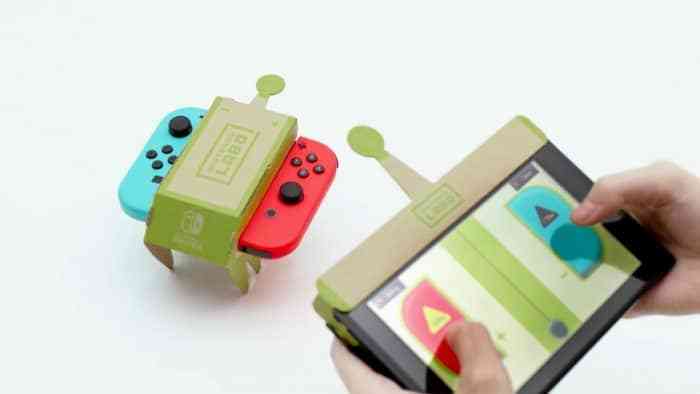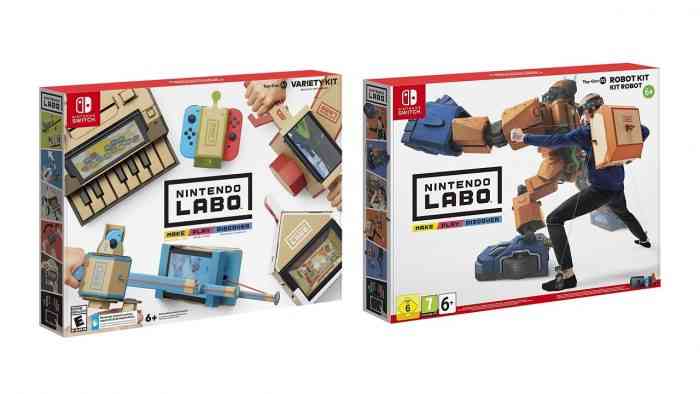Is The Labo Truly Innovative Or A Gimmick To Pluck At Our Wallets?
It’s been a few days now since Nintendo went out on the furthest of limbs and announced their new peripheral line: the Labo. While Nintendo certainly is no stranger to innovation, the internet is buzzing with thoughts, opinions, and promises to hold onto our recycling as the release date gets closer. While we were given a good visual representation of what to expect out of the Labo, the sizable questions that remain are what will it cost me, and how long will it actually last. Let’s take a closer look at Nintendo’s latest innovation to get a little perspective.
The Nintendo Labo is a series of cardboard cut-outs folded in a specific manner that your Switch is able to interact with them in a variety of ways. In the trailer alone we saw it turned into a house, an RC car, a piano, and a backpack that functions like robot armor. The first question at this point is HOW? How did they not only come up with this idea but also implement it to what seems like actual functionality. The concept boggles the mind and Nintendo is taking a huge risk on this one. We had all assumed video game peripherals had died out with the Wii years ago, but not only are they coming back, they are made from a household material you cannot wash, clean, get wet, and will otherwise damage with ease. This makes us take a huge step back and ask Nintendo if that 4/20 release date is really just a coincidence. While there is something to be said for an environmentally friendly approach from a large developer, the fact this will cost money and most likely break within the first few weeks of purchase is a red flag.
_________________________
“At this point, it actually doesn’t sound like a bad idea – on paper… or cardboard.”
If we can look beyond the idea of spending money for stiff paper as a peripheral, we can move on to the motivation for this move: nostalgia. It’s a word we throw around a lot in video games but that’s because it sells. Is a beloved franchise returning? Instant sales. Guest character in a game? Sales. Nintendo went one step further to capitalize on our childhood memories of creativity and ingenuity with cardboard, but is it a step too far? I remember as a kid being in the backyard in the summer, a giant cardboard box on its side as I colored and drew random things in crayon, the smell of summer air, the freshly cut grass, the wax of the crayon… the memories of childhood come back and that is what Nintendo is banking on. My immediate reaction to the Labo was one of elation and excitement until I remembered I am an adult now and spending money for a glorified controller made of cardboard is a dangerous investment.

Of course, this is most likely targeted at a younger audience, because think about it: We as the ones with the money will remember our cardboard experiences and see a chance to share with our kids. We can help them build it, they can color it, add stickers, and generally be creative. At this point, it actually doesn’t sound like a bad idea – on paper… or cardboard. Now we have to break down the technical aspect: How does this actually work? Clearly, the wizards at Nintendo have built these things to perfection but in the trailer all we can tell is that somehow the power of the Joy-cons makes it work, and potentially work very well. Cranks are turned, levers are thrown, switches are flipped, and presto, you have a functional video game peripheral you can recycle. While we don’t yet know specifically how each one is designed to function – and therefore cannot critique how effective they will be – the biggest looming threat once the Labo releases will be copycats.
_________________________
“The entire thing promotes nostalgia as a selling point, but how about once it’s already sold?”
It feels like a guarantee that not only will other companies jump in and make a cheaper version, but the internet will very quickly have stencils readily available for download to make your own. Nintendo must have realized this would happen, so unless there happens to be some fancy wiring within the cardboard itself to help it work, it won’t be long before people are downloading these schematics. Maybe Nintendo is hoping this will happen and encourage people to create even more complex contraptions?

This brings us to the final point: playability. We have peripherals that are guaranteed to break down and break down fast. Our normal controllers take a beating without us even realizing it as we death-grip them during intense fights (and for some, hurl them across the room.) The entire thing promotes nostalgia as a selling point, but how about once it’s already sold? What we have seen appears to be a variety of tech-demos for each model, an introduction to how they work, but without the support of actual game functionality – and we know Nintendo is capable of ingenuity when it comes to games – this is going to be a one-time product that quickly fades to nothing in favor of traditional gaming. Nintendo has taken a massive leap forward with the Switch, outselling the competition and experienced a meteoric rise. Unless they have a very bold plan for the Labo in the coming months, this could make them lose a lot of credibility. Nobody wants a tech demo; look how badly VR is hurting because of a lack of full-length games. It is worth noting that several of the designs are not available in the first two Toy-con packs, meaning the Labo is poised to continually release new content down the road.

With the impending arrival of the Labo – whether gamers care or not, – there is one important note to take away from this: Beneath Nintendo’s reach for nostalgia is innovation, and we would be foolish to think this isn’t the first step to something bigger. We wouldn’t have the Switch without the Wii U, and we wouldn’t have the Wii U without the Wii. Their entire video game path has been about trying something new only to make it something far better the next time around. The Labo feels like another test before something truly wild makes its way out of Nintendo’s front door and into our homes. Maybe this is a point of cautious optimism for the future, but for the Labo, we definitely need more information before we buy.